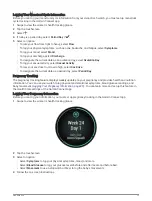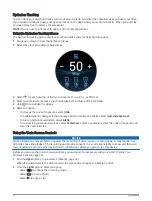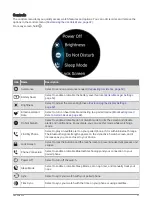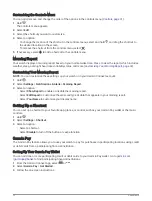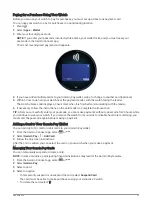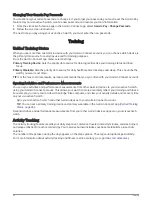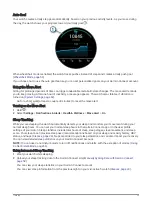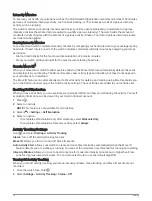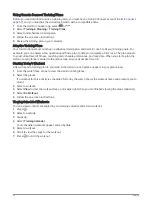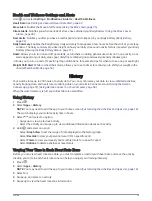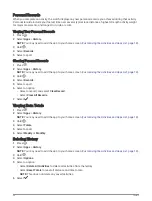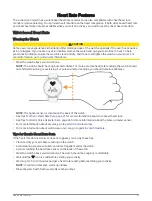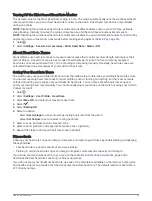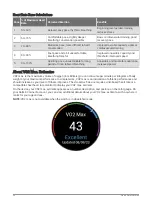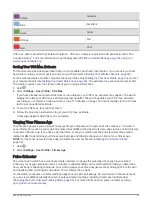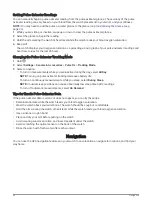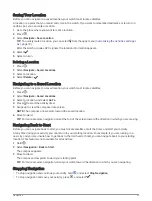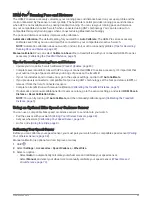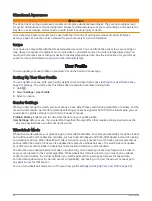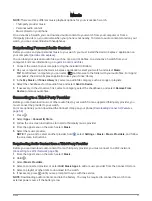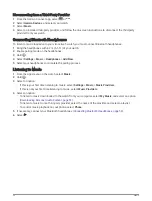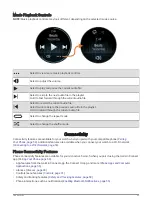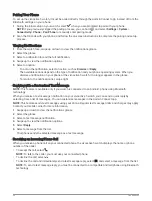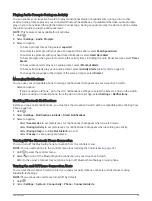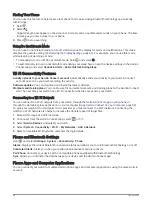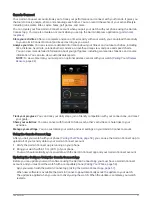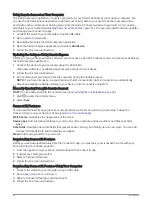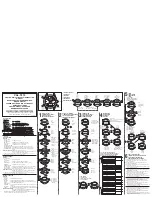
Turning Off the Wrist-based Heart Rate Monitor
The default value for the Wrist Heart Rate setting is Auto. The watch automatically uses the wrist-based heart
rate monitor unless you pair a chest heart rate monitor to the watch. Chest heart rate data is only available
during an activity.
NOTE: Disabling the wrist-based heart rate monitor also disables features such as your VO2 max. estimate,
sleep tracking, intensity minutes, the all-day stress feature, and the wrist-based pulse oximeter sensor.
NOTE: Disabling the wrist-based heart rate monitor also disables the on-wrist detection feature for Garmin Pay
payments, and you must enter a passcode before making each payment (
).
1 Hold .
2 Select Settings > Sensors & Accessories > Wrist Heart Rate > Status > Off.
About Heart Rate Zones
Many athletes use heart rate zones to measure and increase their cardiovascular strength and improve their
level of fitness. A heart rate zone is a set range of heartbeats per minute. The five commonly accepted
heart rate zones are numbered from 1 to 5 according to increasing intensity. Generally, heart rate zones are
calculated based on percentages of your maximum heart rate.
Setting Your Heart Rate Zones
The watch uses your user profile information from the initial setup to determine your default heart rate zones.
You can set separate heart rate zones for sport profiles, such as running and cycling. For the most accurate
calorie data during your activity, set your maximum heart rate. You can also set each heart rate zone and
enter your resting heart rate manually. You can manually adjust your zones on the watch or using your Garmin
Connect account.
1 Hold .
2 Select Settings > User Profile > Heart Rate.
3 Select Max. HR, and enter your maximum heart rate.
4 Select
.
5 Select Resting HR.
6 Select an option:
• Select Use Average to use your average resting heart rate from the watch.
• Select Set Custom to set a custom resting heart rate.
7 Select a zone, and enter a value for each zone.
8 Select a sport profile to add separate heart rate zones (optional).
9 Repeat the steps to add sport heart rate zones (optional).
Fitness Goals
Knowing your heart rate zones can help you measure and improve your fitness by understanding and applying
these principles.
• Your heart rate is a good measure of exercise intensity.
• Training in certain heart rate zones can help you improve cardiovascular capacity and strength.
If you know your maximum heart rate, you can use the table (
Heart Rate Zone Calculations, page 44
determine the best heart rate zone for your fitness objectives.
If you do not know your maximum heart rate, use one of the calculators available on the Internet. Some gyms
and health centers can provide a test that measures maximum heart rate. The default maximum heart rate is
220 minus your age.
Heart Rate Features
43

